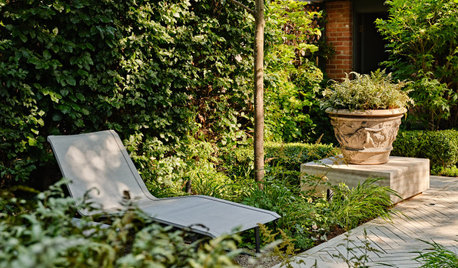creeping charlie chump
yardmartyr
15 years ago
Featured Answer
Sort by:Oldest
Comments (20)
Kimmsr
15 years agodchall_san_antonio
15 years agoRelated Discussions
Is this creeping Charlie?
Comments (5)Compare to Cymbalaria muralis. https://www.google.com/search?q=cymbalaria+muralis&source=lnms&tbm=isch&sa=X&ved=0ahUKEwia9OCrhInVAhWFQSYKHYySAMgQ_AUICigB&biw=1920&bih=940#tbm=isch&q=cymbalaria+muralis+leaves...See MoreCreeping Charlie Invasion!
Comments (4)Sorry for the delay, I was somewhere between "busy" and "completely hammered." You can blanket spray in a backpack or 1 gallon sprayer, no problem! Then, when smaller patches re-sprout from the seeds, use the tiny sprayer. In the future, they sell concentrates for hose-end application or dilution in your 1-gallon sprayer--and they tend to be a lot cheaper. A pre-emergent next April or May will serve you well here, too. It'll stop the seeds from sprouting....See MoreCreeping charlie nightmare
Comments (2)I would install some kind of edging; metal, brick, wood, . . . there are many materials and techniques you could choose from, see https://www.bing.com/images/search?q=edging&FORM=HDRSC2 Adding another aggressively spreading plant could only make the situation worse....See Moredealing with creeping charlie
Comments (4)For a lawn with Creeping Charlie, you want to use this: https://www.domyown.com/hiyield-triclopyr-ester-p-4543.html It takes a few applications, but my lawn went from like 35% Creeping Charlie\Wild Violet to virtually nothing. Yes, it's a herbicide, but Creeping Charlie is pretty much impossible to control organically. I have never sprayed this on my garden bed though, so I don't know if it would damage garden plants or not (I probably wouldn't try it unless you can spray with pinpoint accuracy), but it works wonders for a lawn!...See MoreKimmsr
15 years agoyardmartyr
15 years agodchall_san_antonio
15 years agoyardmartyr
15 years agodchall_san_antonio
15 years agoKimmsr
15 years agodchall_san_antonio
15 years agokelleynelson
15 years agoKimmsr
14 years agodolioliosisophile
12 years agoelliedawn
9 years agomorpheuspa (6B/7A, E. PA)
9 years agoKimmsr
9 years agoillawnman
9 years agoKimmsr
9 years agotomp123
9 years agoKimmsr
9 years ago
Related Stories

EDIBLE GARDENSNatural Ways to Get Rid of Weeds in Your Garden
Use these techniques to help prevent the spread of weeds and to learn about your soil
Full Story
GARDENING GUIDESDo You Have This Invasive Plant in Your Yard?
Garlic mustard is spreading across the U.S. Here’s how to spot it and what to do
Full Story
LANDSCAPE DESIGN7 Low-Maintenance Lawn Alternatives
Turf isn't the only ground cover in town. Get a lush no-grass lawn with clover, moss and other easy-care plants
Full Story
GARDENING GUIDES5 Weed-Smothering Ground Covers
Let these landscape plants do the dirty work of choking out weeds while you sit back and enjoy the view
Full Story
GARDENING GUIDESRegal Lavender Rules Gardens Coast to Coast
Learn how to grow this fragrant, beautiful herb and show off its full beauty in the landscape
Full Story
GARDENING GUIDESGarden Myths to Debunk as You Dig This Fall and Rest Over Winter
Termites hate wood mulch, don’t amend soil for trees, avoid gravel in planters — and more nuggets of garden wisdom
Full Story
GARDENING GUIDESHouzz Call: What’s Your Favorite Backyard Beauty?
The simple, honest daisy is this writer’s go-to garden flower. We want to hear which plant, flowering or otherwise, gives you special joy
Full Story
PETSGarden Alert: 22 Plants to Keep Away From Pets
Avoid potential danger by keeping dogs and cats away from these landscaping and houseplant favorites
Full Story
DECORATING GUIDESKnot Again! Macrame Is Back
It's happened. A craft that typified 1970s style (the owls, the spider plants!) is back, but better
Full Story
LANDSCAPE DESIGNHow to Create a Beautiful Shade Garden
Turn the cool, shady spot in your garden into your own quiet oasis
Full StorySponsored



arkansas girl